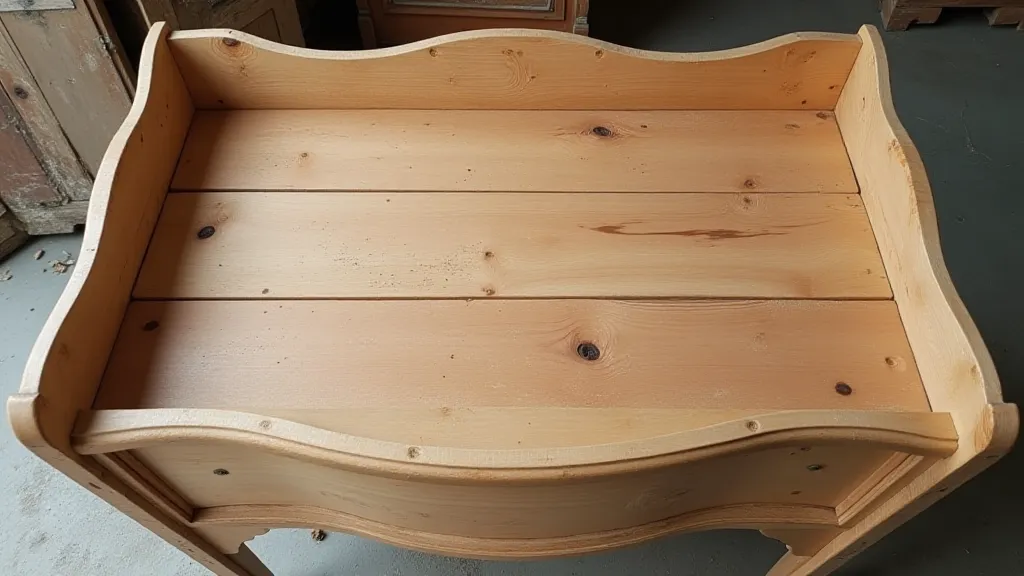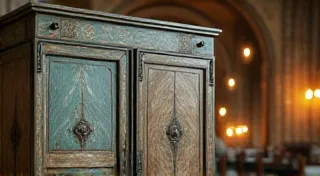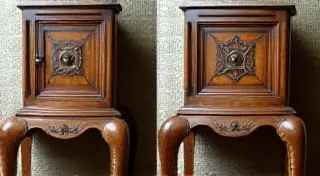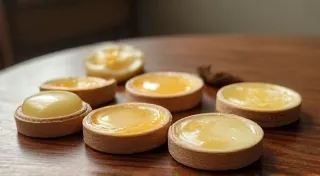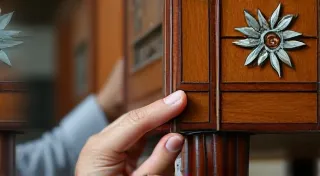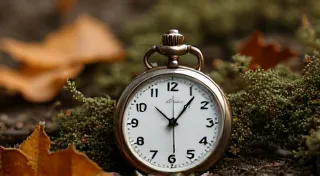Stripping Old Finish from Antique Furniture: Safe & Effective Methods
Removing old finishes from antique furniture is often the first and most challenging step in the restoration process. Years of varnish, paint, and grime can obscure the beauty of the wood and prevent proper repairs. This guide explores several safe and effective methods for finish stripping, ensuring you preserve the antique's value and integrity.
Understanding the Finish & Assessing the Furniture
Before you begin, it’s crucial to identify the type of finish you're dealing with. Common finishes include varnish, shellac, lacquer, and paint. Knowing the finish helps determine the best stripping method. Also, consider the furniture’s construction and condition. Delicate carvings, veneers, or loose joints require a gentler approach. Sometimes, issues like identifying and repairing woodworm damage can complicate the stripping process, necessitating extra care. Always test a small, inconspicuous area first to assess the finish’s reaction to your chosen stripping method.
Method 1: Chemical Strippers – The Workhorse of Restoration
Chemical strippers are the most common way to remove old finishes, particularly stubborn layers. They typically contain solvents that soften and dissolve the finish, allowing you to scrape it away. There are several types:
- Solvent-Based Strippers: Highly effective for removing multiple layers and tough finishes, but release strong fumes. Require excellent ventilation and proper safety gear.
- Water-Based Strippers: Less harsh than solvent-based options and often have lower VOCs (Volatile Organic Compounds). May require longer dwell times.
- Citrus-Based Strippers: Often considered more environmentally friendly and have a pleasant scent. Can be effective on less stubborn finishes.
Safety Precautions with Chemical Strippers:
- Ventilation: Work in a well-ventilated area, preferably outdoors.
- Protective Gear: Wear chemical-resistant gloves, eye protection, and a respirator.
- Disposal: Dispose of used stripper and rags properly according to local regulations. Rags soaked in stripper can spontaneously combust – spread them out to dry completely before disposal.
Stripping Process:
- Apply a thick layer of stripper with a brush.
- Allow the stripper to dwell for the recommended time (usually 15-30 minutes).
- Scrape away the softened finish with a putty knife or scraper. Work with the grain of the wood to avoid damage.
- Repeat the process if necessary.
- Clean the surface with mineral spirits to remove any residue.
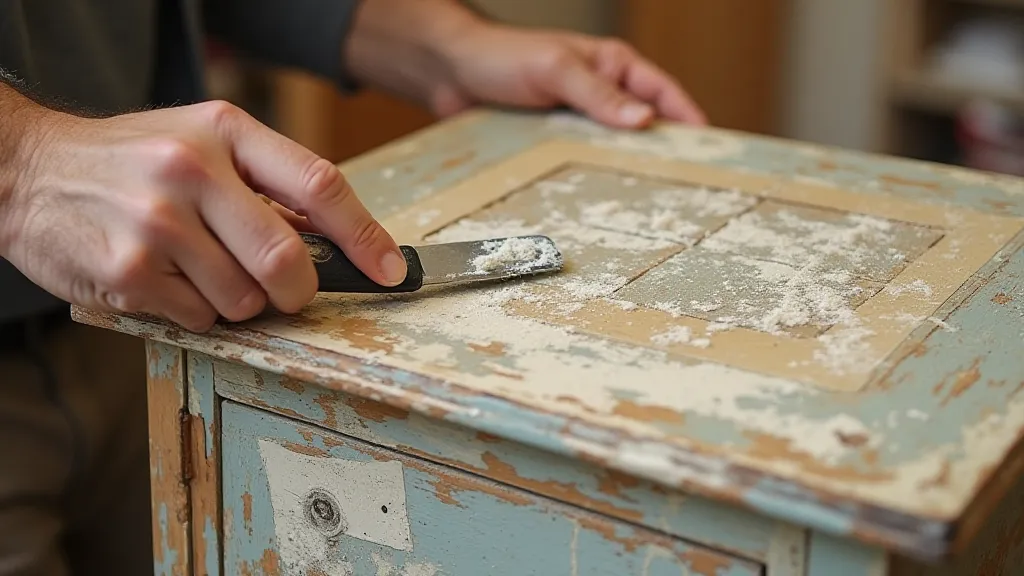
Method 2: Heat Gun Stripping – A Targeted Approach
A heat gun can be effective for removing paint and varnish, particularly on flat surfaces. The heat softens the finish, allowing you to scrape it away. This method is best suited for experienced restorers as excessive heat can damage the wood. It’s vital to be aware of how heat can impact delicate features like restoring marquetry on antique furniture, where careful and controlled heat application is absolutely critical to avoid irreversible damage.
Safety Precautions with Heat Guns:
- Ventilation: Work in a well-ventilated area.
- Protective Gear: Wear gloves and eye protection.
- Fire Hazard: Be extremely careful to avoid sparks and flames. Keep a fire extinguisher nearby.
Stripping Process:
- Direct the heat gun at a small area of the finish.
- As the finish softens, scrape it away with a putty knife.
- Work in sections and avoid overheating the wood.
- Be particularly careful around veneers, as heat can easily cause them to lift.
Method 3: Other Methods & Considerations
While chemical strippers and heat guns are most common, other options exist. The choice of method also depends on the furniture’s age and the material it’s constructed from, and sometimes requires a specialist. Careful consideration must be given to how any cleaning process might affect other elements of the piece, such as antique leather – knowing how to properly working with antique leather and avoid causing further damage is paramount.
- Sandblasting: Best left to professionals, as it can easily damage delicate antique furniture.
- Steam Stripping: Uses steam to soften the finish. Can be gentler than chemical stripping.
- Mechanical Removal: Using hand planes or scrapers. This is a very slow and skilled process but can avoid chemicals.
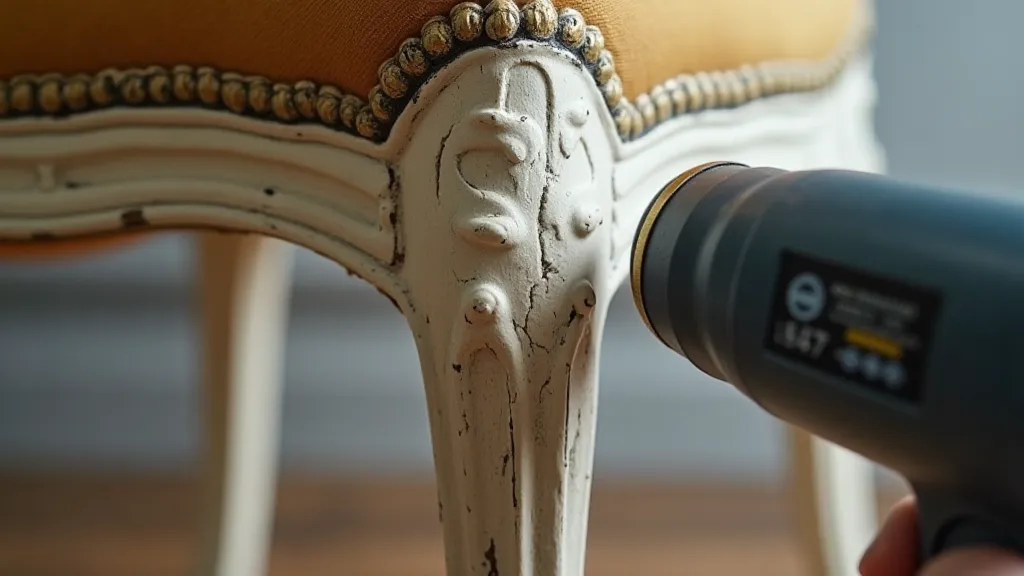
Expanding on Stripping Techniques and Challenges
Beyond the core methods detailed above, understanding the nuances of antique finishes is essential for a successful restoration. For instance, shellac, a common finish on older furniture, responds differently to stripping agents than modern varnishes. Recognizing these differences can save significant time and prevent damage. The age of the finish also plays a crucial role; older finishes tend to be more brittle and may require more gentle approaches.
Often, furniture pieces accumulate multiple layers of finishes over their lifespan. Each layer may require a specific technique or a combination of methods. Patience and a methodical approach are key to achieving a clean slate without harming the underlying wood. Testing various stripping agents on small, inconspicuous areas is always recommended to determine the most effective solution. Furthermore, be aware that some finishes contain lead or other hazardous materials, requiring specialized safety precautions.
Post-Stripping Care – Preparing for a New Finish
After removing the old finish, it's crucial to clean the wood thoroughly. Use a good quality wood cleaner and mineral spirits to remove any remaining residue. Inspect the wood for any damage and make necessary repairs before applying a new finish. The wood may also need to be lightly sanded to create a smooth surface for the new finish. This often involves grain filling and pore filling, especially on open-grain woods like mahogany or oak.
Hardware Considerations
During the stripping process, pay close attention to the furniture’s hardware – knobs, pulls, hinges, and escutcheons. These often have their own finishes that require separate treatment. Sometimes, hardware is lost or damaged during the process. Knowing how to properly replacing missing furniture hardware to match the original period and style is a vital skill for antique restorers.
Choosing the Right Method: A Recap
The best method for stripping old finish depends on the type of finish, the furniture's condition, your experience level, and the presence of other sensitive features. Always prioritize safety and take your time. A careful and methodical approach will preserve the beauty and value of your antique furniture for generations to come.
